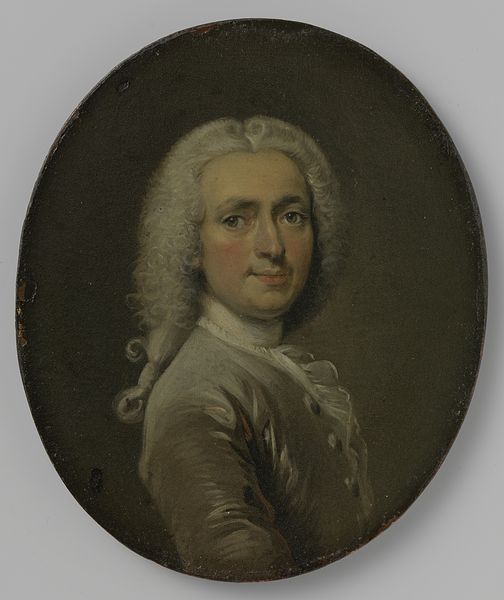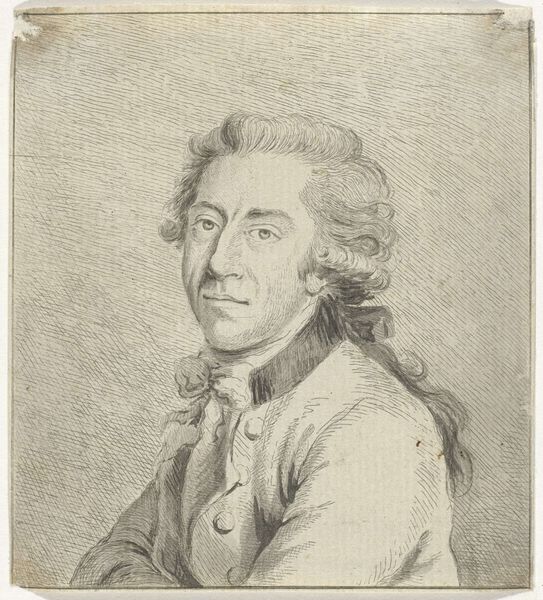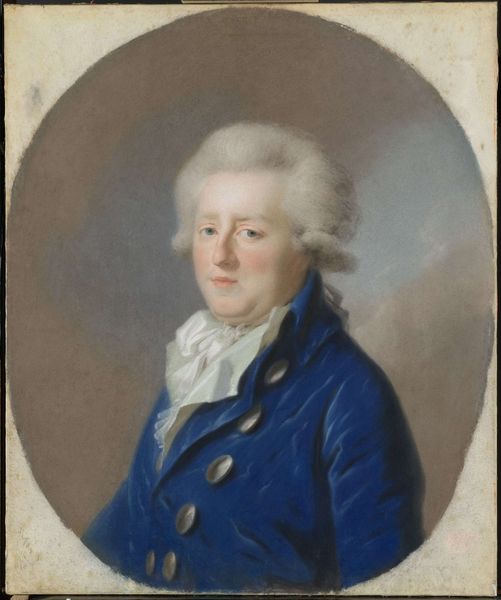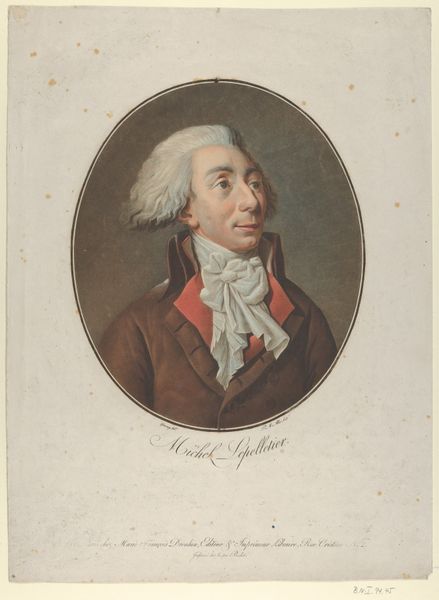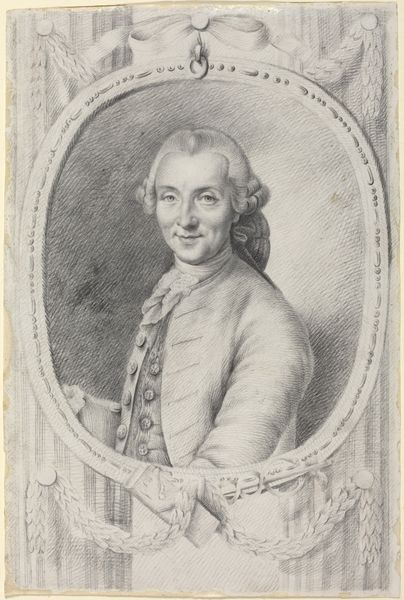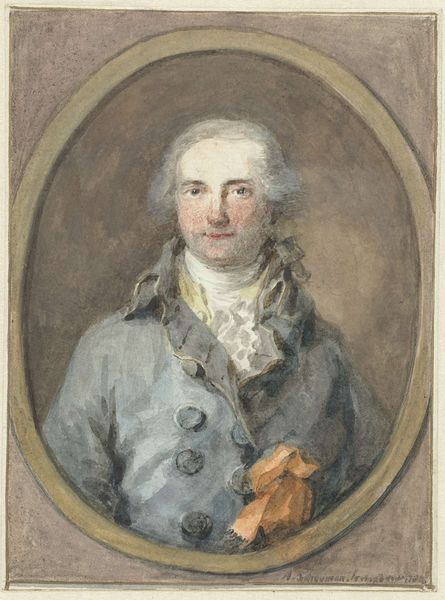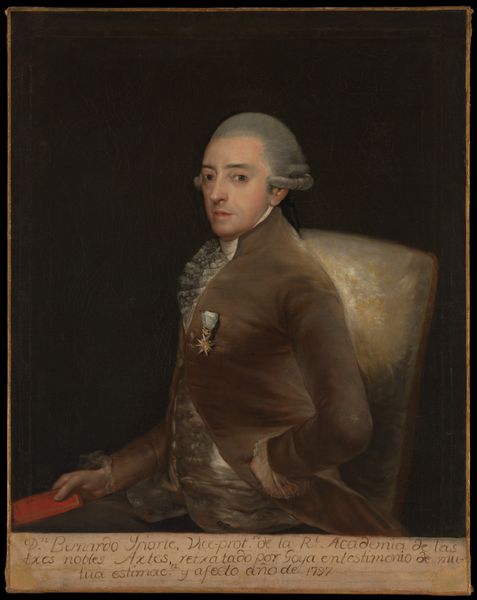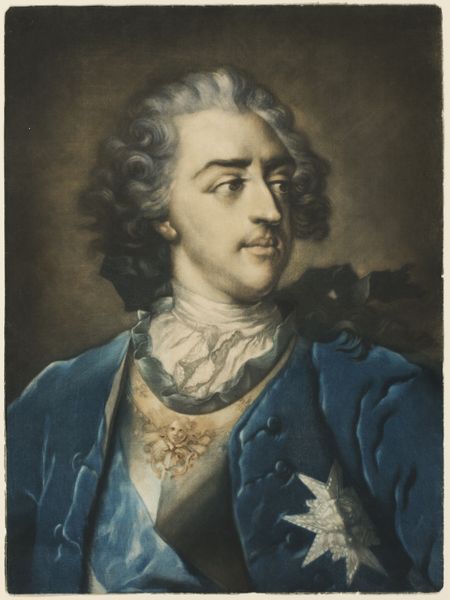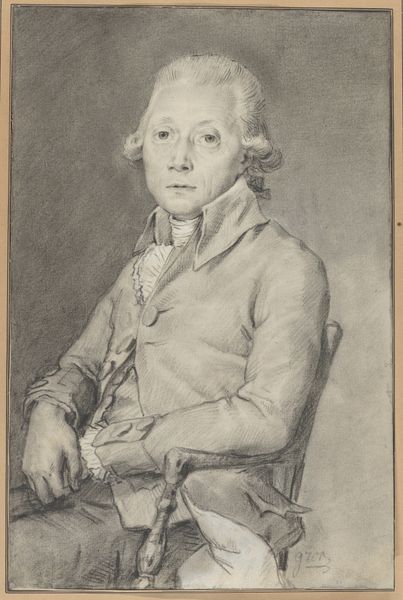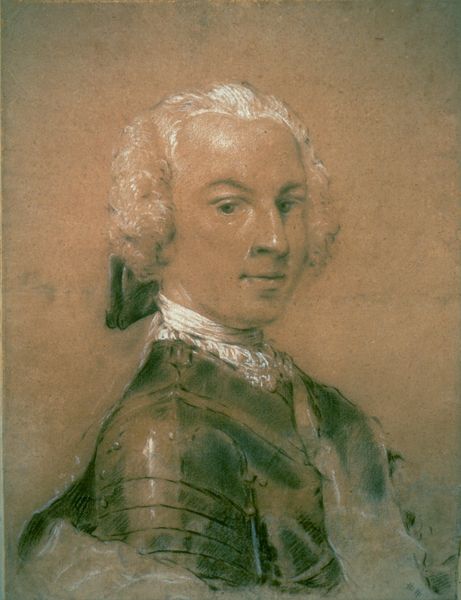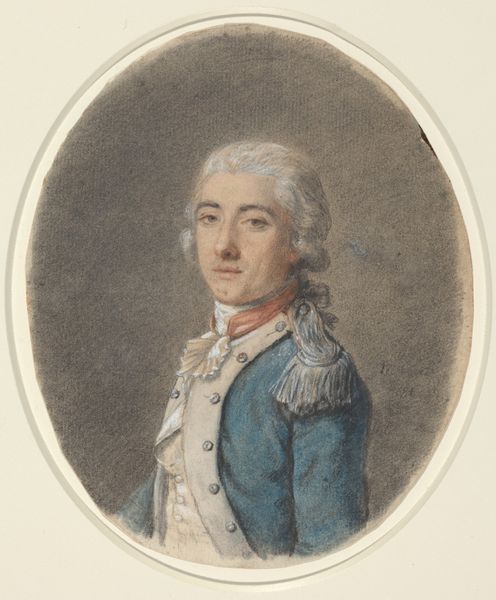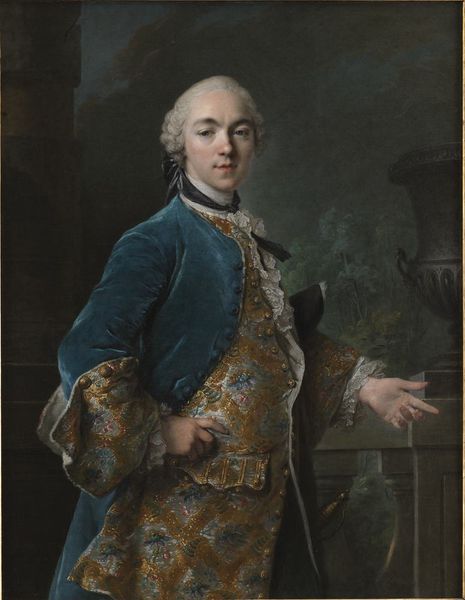
painting, oil-paint
#
portrait
#
neoclacissism
#
painting
#
oil-paint
#
academic-art
Copyright: Public domain
Curator: This is a "Portrait of a Man" by Barbara Krafft. Notice anything striking? Editor: Immediately, the muted color palette catches my eye. The contrasting white of the man’s frilly collar draws me to his face, creating a focal point. The muted colors suggest a certain restraint. Curator: Absolutely, and understanding the painting as a material object within its specific socio-economic context sheds more light on these artistic choices. It speaks to a society deeply invested in the trappings of class. His jacket and finery illustrate the materials accessible to the social elite. Editor: And it's not merely access, it's how these materials are articulated. Note the exquisite rendering of texture—the softness of the lace against the severity of the jacket’s high collar, creates a visual harmony, that underscores the Neoclassical preference for balanced composition. Curator: The materials are, of course, important as visual signifiers. What are your thoughts on Krafft’s choice of oil paint for this piece? What other functions do they serve beyond the visual plane? How would this affect its later interpretation and consumption? Editor: The subtle gradations she achieves are marvelous. Through color and light, she crafts a remarkably lifelike face. The detail in his eyes is wonderful, creating an immediacy between the subject and the viewer, drawing you in, creating a silent dialogue. Curator: It's undeniable. However, looking closer, consider the artistic process itself. The brushstrokes, layered and deliberate, demonstrate skilled labor – labor directly influenced by academic training of the time and shaped by social demand. Consider the economic systems that funded such artwork. Editor: But hasn’t that demand allowed the artist to make the work in the first place? How does it sit between external demand and unique aesthetic interpretation and talent? His gaze suggests thoughtful depth, achieved by contrasting dark and light values around his eyes and face, creating both literal and psychological depth. Curator: Agreed, however we also understand how the Neoclassical movement positioned this within the artistic marketplace. This affects not only how Krafft conceived and painted the portrait but how we understand its value today. It's this intersection of labor, capital, and material that informs our perception. Editor: In closing, examining the elements and principles gives us insight into the choices of the artist, how a visual language and aesthetic has worked over time to speak across different historical contexts. Curator: Indeed, it's understanding both the aesthetic and socio-economic factors influencing the portrait’s production that ultimately completes our understanding.
Comments
No comments
Be the first to comment and join the conversation on the ultimate creative platform.

